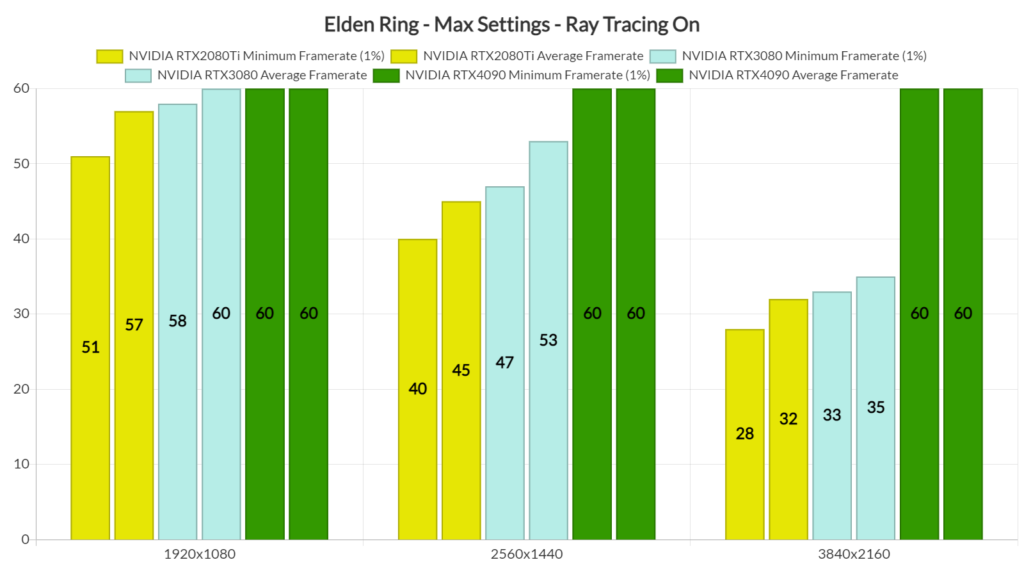Elden Ring Ray-Tracing: Mediocre Implementation, PC Gaming Still an Afterthought to FromSoftware

By Karl Zimmerman | March 23rd, 2023 | Categories: Elden Ring
Over a year after its release, Elden Ring finally received the long-promised patch that brings ray tracing to the game with version 1.09. While the update introduces some subtle visual improvements and bug fixes, it falls short of expectations by not including upscaling support, such as DLSS or FSR. This half-hearted implementation by Bandai Namco and FromSoftware is disappointing to PC players, as the visual gains are not worth the performance cost.
It’s disappointing to see that Bandai Namco and FromSoftware’s history of underwhelming PC ports and support continues with this ray tracing update for Elden Ring. PC players have experienced their fair share of challenges and past failures with games like Dark Souls, where the original PC port was plagued with technical issues and required fan-made mods to make it playable. The community’s expectations were already modest, but this lackluster ray tracing implementation is just another example of Bandai Namco’s and FromSoftware’s general apathy towards PC Gaming.
Table of Contents
Another Underwhelming PC Implementation
It’s crucial for Bandai Namco to recognize the importance of delivering high-quality experiences for PC players, especially when it comes to cutting-edge technologies like ray tracing. PC gaming offers vast potential, and it’s disheartening to see it undermined by a lack of proper support. Moving forward, Bandai Namco must prioritize the needs of PC gamers and ensure that future updates and titles are developed with the same level of care and attention as their console counterparts. The gaming community deserves better, and it’s time for Bandai Namco and FromSoftware to step up to the challenge.
The updated ray tracing feature offers four RT quality levels, which reportedly affect shadows and ambient occlusion primarily. While these enhancements provide better-looking foliage shadows and some added depth on textures, the visual improvements are far from dramatic. This is disappointing considering the long wait for the update.
Lack of Upscaling Support
What makes the situation even more frustrating for PC players is the lack of upscaling support, such as DLSS, FSR, or XeSS. These technologies could have helped offset the performance hit from enabling ray tracing, but their absence means that players must choose between visual improvements and smooth gameplay.
Bandai Namco’s PC system requirements for ray tracing might be overly cautious, as some lower-tier cards can still handle the effects at lower resolutions. However, this doesn’t change the fact that the benefits of ray tracing in Elden Ring are too subtle to justify the performance cost for many players.
Poor Ray-Tracing Performance
Tests conducted on various graphics cards at different resolutions showed a significant drop in performance when ray tracing was enabled. For instance, the RTX 3070 experienced a 25% performance loss at 1440p, while the Arc A750 managed Medium RT effects at 1080p with occasional stutters.
At 1440p/Max Settings/Max RT, the only GPU that can provide a constant 60fps experience is the RTX4090. And as for native 4K/Max Settings/Max RT, only the RTX4090 was once again able to provide a smooth gaming experience.

In conclusion, Bandai Namco’s half-hearted implementation of ray tracing in Elden Ring is a missed opportunity for PC players who have been anticipating a more significant visual overhaul. The lack of upscaling support, such as DLSS, exacerbates the issue, as the visual gains do not outweigh the performance hit. It remains to be seen if the upcoming Shadow of the Erdtree expansion will take better advantage of ray tracing technology, but for now, Elden Ring’s ray tracing update leaves much to be desired.















Cope.